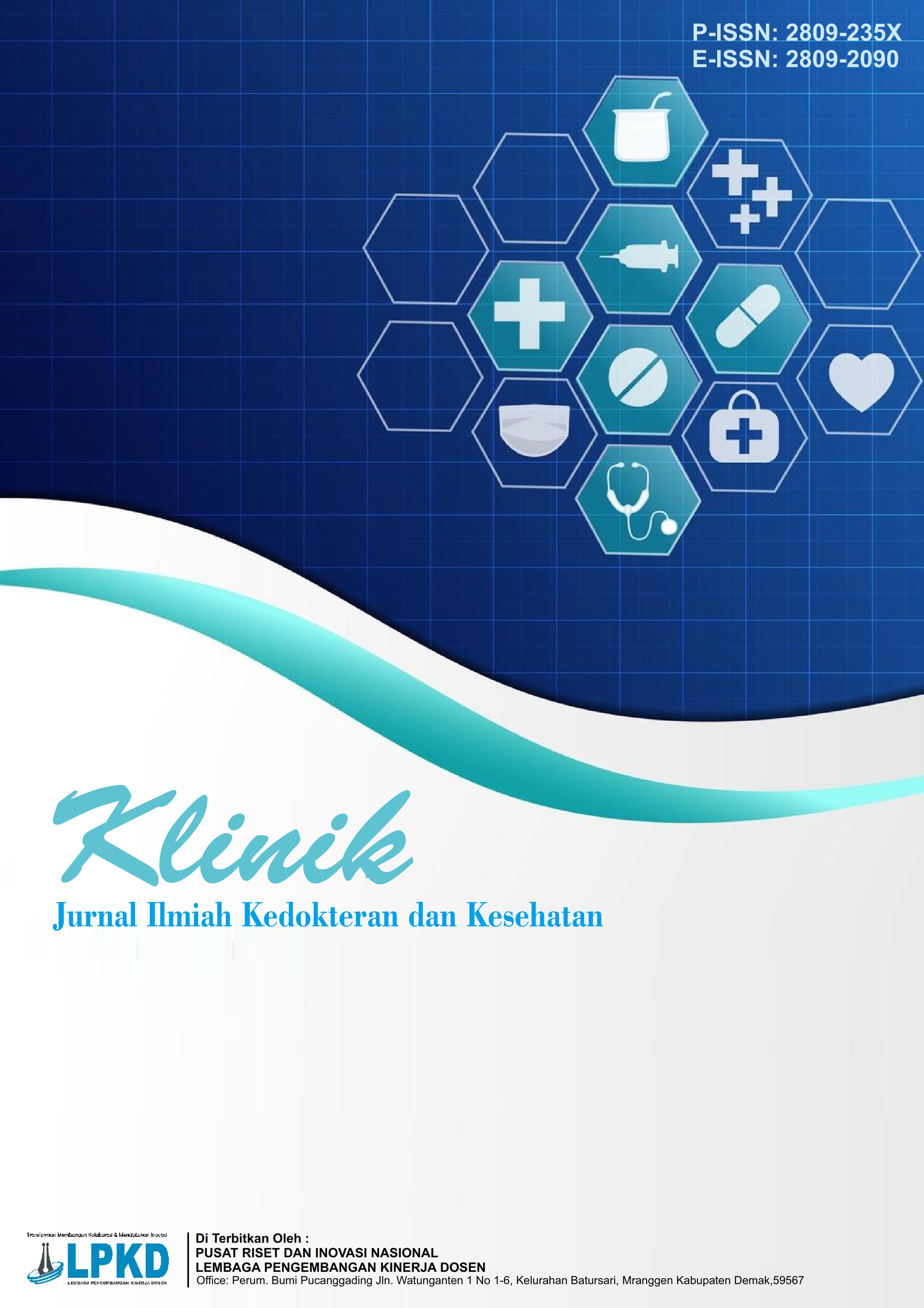Analisis Risiko Gangguan Pendengaran pada Pekerja Bagian Produksi Basah di PT. Hok Tong Jambi
DOI:
https://doi.org/10.55606/klinik.v4i3.4856Keywords:
Noise, hearing loss, wet production, occupational risksAbstract
The rapid development of the industrial sector in Indonesia increases the risk of exposure to physical hazards such as noise, especially in the rubber processing industry. One of them is PT. Hok Tong Jambi, which shows noise levels exceeding the Threshold Limit Value (NAB) to reach 99.1 dBA. This study aims to analyze the risk of hearing loss in wet production workers. This study uses a qualitative method with a descriptive approach, data were collected from 6 informants through observation, interviews, document review and noise measurement using a Sound Level Meter. Data analysis techniques are carried out by data reduction, data presentation, and drawing conclusions, in accordance with the Miles and Huberman approach. The results showed that most workers were exposed to high noise for more than 8 hours per day, with an intensity exceeding 85 dBA, and minimal use of ear protection. Early symptoms such as tinnitus and headaches were reported by workers. The risk of hearing loss in wet production workers at PT. Hok Tong Jambi is high and real. This study emphasizes the importance of comprehensive noise control that includes technical, administrative, and educational approaches. These findings are expected to be the basis for strengthening OHS policies and developing participatory interventions based on field contexts.
References
Abjasiqo, M. Y., Winarko, W., & Sari, E. (2021). Pengaruh kebisingan, umur, masa kerja, lama paparan dan penggunaan alat pelindung telinga pada tenaga kerja di perusahaan kabel otomotif. Ruwa Jurai: Jurnal Kesehatan Lingkungan, 14(2), 98. https://doi.org/10.26630/rj.v14i2.2165
Basner, M., Babisch, W., Davis, A., Brink, M., Clark, C., Janssen, S., & Stansfeld, S. (2020). Auditory and non-auditory effects of noise on health. The Lancet, 383(9925), 1325–1332. https://doi.org/10.1016/S0140-6736(13)61613-X
Dewi, A. T., Joko, T., & Darundiati, Y. H. (2021). Hubungan intensitas kebisingan di lingkungan kerja dengan peningkatan tekanan darah pada pekerja PT X Semarang. Jurnal Kesehatan Masyarakat (Undip), 9(6), 832–840. https://doi.org/10.14710/jkm.v9i6.31784
Fitriana, M., et al. (2021). Komunikasi kerja dalam lingkungan bising: Studi kasus pada industri manufaktur. Jurnal Ilmiah K3, 12(3), 221–230.
Halim, N., Setiawan, I., & Indradi, R. (2022). Hubungan lama paparan dan intensitas kebisingan terhadap gangguan pendengaran akibat bising. CoMPHI Journal: Community Medicine and Public Health of Indonesia Journal, 3(1), 1–5. https://doi.org/10.37148/comphijournal.v3i1.97
Ikhsan, M., et al. (2025). Noise exposure and risk of hearing loss among factory workers: A cross-sectional study. Occupational Health Journal, 5(1), 10–18.
Mariani, F., Santosa, I., & Nugroho, R. (2020). Effectiveness of personal protective equipment for noise exposure in the workplace. Journal of Occupational Health, 62(5), e12103.
Marlina, D., et al. (2023). Eksplorasi risiko gangguan pendengaran akibat paparan kebisingan di lingkungan kerja. Jurnal Kesmas Nasional, 20(3), 117–125.
Meilasari, F., Sutrisno, H., Ariqah, R., Suwarni, L., Nirmala, A., & Wibowo, Y. H. W. R. (2021). Kajian dampak kebisingan akibat aktivitas pertambangan di area washing plant. Jurnal Kesmas (Kesehatan Masyarakat) Khatulistiwa, 8(3), 141. https://doi.org/10.29406/jkmk.v8i3.3061
Panggeleng, A. M. F., Ananda, R., & Maharja, R. (2022). Faktor yang berhubungan dengan gangguan fungsi pendengaran pekerja. Jurnal Keperawatan Profesional (KEPO), 3(2), 108–114. https://doi.org/10.36590/kepo.v3i2.436
Puspita, D., Hardi, I., Nurbaety, Puspitasari, A., & Masriadi. (2023). Faktor yang berhubungan dengan gangguan pendengaran pada pekerja bagian produksi di TT IKI Makassar. Window of Public Health Journal, 4(4), 374–382. http://jurnal.fkm.umi.ac.id/index.php/woph/article/view/woph4304
Rusmaniar, R., Novianus, C., & Setyawan, A. (2020). Hubungan kebisingan dengan keluhan fisiologis, keluhan psikologis, keluhan komunikasi pada pekerja bagian produksi. Jurnal Untuk Masyarakat Sehat, 4(2), 181–189. https://ejournal.urindo.ac.id/index.php/jukmas/article/view/1025/701
Sari, T., & Widodo, E. (2022). Persepsi pekerja terhadap penggunaan alat pelindung telinga di industri tekstil. Jurnal Kesmas, 18(2), 78–84.
Srisantyorini, et al. (2025). Evaluasi tingkat kebisingan dan kepatuhan penggunaan APT di industri pengolahan. Jurnal K3 Indonesia, 12(1), 45–53.
Kementerian Ketenagakerjaan Republik Indonesia. (2018). Peraturan Menteri Tenaga Kerja No. 5 Tahun 2018 tentang Keselamatan dan Kesehatan Kerja Lingkungan Kerja.
NIOSH. (2021). Noise and hearing loss prevention. Centers for Disease Control and Prevention (CDC). https://www.cdc.gov/niosh/topics/noise/default.html
WHO. (2021). World report on hearing. https://www.who.int/publications/i/item/world-report-on-hearing
WHO. (2023). Deafness and hearing loss. https://www.who.int/news-room/fact-sheets/detail/deafness-and-hearing-loss
Downloads
Published
How to Cite
Issue
Section
License
Copyright (c) 2025 Jurnal Ilmiah Kedokteran dan Kesehatan

This work is licensed under a Creative Commons Attribution-ShareAlike 4.0 International License.








